Challenging torrential rains countered by cooperative bats in Costa Rica
Merlin and MTBC team members spent 19 days in Costa Rica last November on a filming trip for “Bat City” with its Director and Emmy
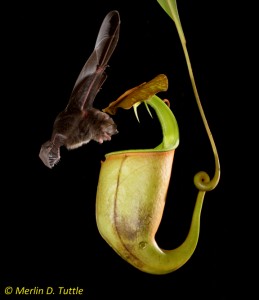
Our captive Hardwicke’s woolly bats (Kerivoula hardwickii) preferred pitchers of bat-adapted Nepenthes hemsleyana plants (see previous blogs), and all woolly bats radio-tracked by Michael and Caroline Schöner in their primary study area consistently returned to the preferred N. hemsleyana pitchers. However the Schöners also found woolly bats in other kinds of plants. Even in their study area they occasionally found an apparently desperate bat roosting in fanged pitcher plants (Nepenthes bicalcarata). This amazing plant relies on a pair of sharp, fang-like, nectar-producing structures above its entrance to facilitate capture of ants that climb down to reach nectar. Approaching ants lose their footing near the tips of the narrowing “fangs,” falling into the water-filled pitchers. Bats can use these pitchers only if they are first drained. This requires a drain hole near the base. No one yet knows whether these holes are made by inventive woolly bats short on alternative shelter or by birds or other animals, perhaps seeking a meal of captured insects.
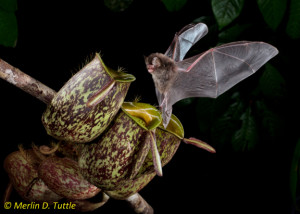
At other locations, where the bat-adapted N. hemsleyana plants are not available, the Schöners also found woolly bats roosting in yet a third kind of pitcher plant (Nepenthes ampullaria), as well as in the unfurling leaves of wild ginger plants (Alpinia sp?). This raises an interesting question. Are similar bats, using different kinds of roosts actually cryptic, but distinct species yet to be discovered? Genetic analyses currently being carried out by the Schöners may reveal fascinating surprises.
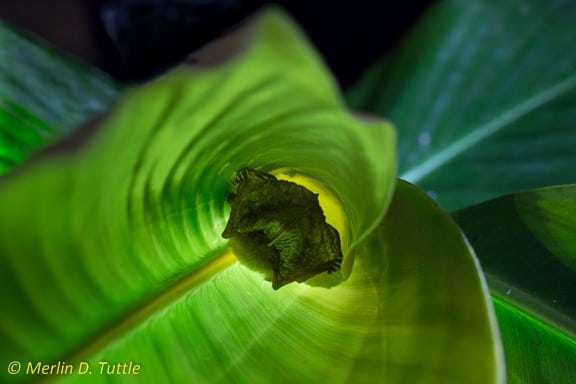
Pitchers of N. ampullaria are clearly not well adapted for bats. Like those of N. bicalcarata, they must be punctured and drained of water before bats can even consider attempting to roost in them. Also, they do not provide a protective lid or operculum that would help shield bats from rain or predator detection. This plant has largely moved away from carnivory and now acquires much of its nutrients from capturing leaf litter that falls to the forest floor, though it still provides a spiny-looking “ladder” to help climbing insects enter. Unlike N. bicalcarata, it rarely has nectar glands for attracting them. By comparison with these two species, N. hemsleyana pitchers, which now rely on nitrogen from bat droppings, are seven times less efficient than related species at trapping insects and seldom obtain energy from falling leaf litter.
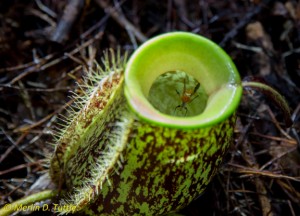
Following a shaky beginning, our trip did have a wonderful ending. In addition to documenting the Schöners’ classic research, and the unique behavior of their woolly bats, local biology professor Dr. Ulmar Grafe organized a lecture in which Merlin was able to inspire members of the Brunei Nature Society at the Universiti of Brunei Darussalam with a much greater appreciation of bats and their conservation needs. And on departure, we were able to supply Dr. Grafe and the Schöners with complete documentation of pitcher plant research, as well as 51 photos illustrating Brunei bat diversity and values, now to be used in producing educational materials. A week after our 34-hour-long return trip, we are still finding it difficult to adjust to an 11-hour time change, but are most grateful to our hosts, Michael, Caroline and Ulmar for making this trip such a success.
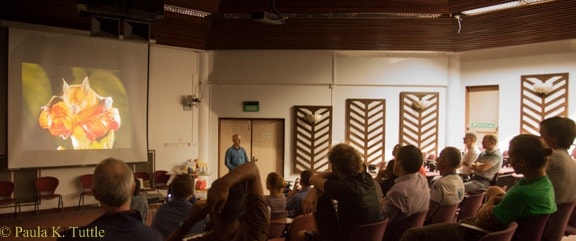
Love our content? Support us by sharing it!
Merlin and MTBC team members spent 19 days in Costa Rica last November on a filming trip for “Bat City” with its Director and Emmy
“Just like the old days, eh Heather?” Kent softly clicks his tally counter as he sits in his folding chair on the other side of
Bats can use sounds in many complex ways. They can sing and even have different dialects… When imagining a bat, the first thoughts that come
It was a long road to Austin, Texas. More than five years after my first introduction to Merlin Tuttle’s Bat Conservation as a teenager, I packed
2024 © Merlin Tuttle’s Bat Conservation. All rights reserved.
Madelline Mathis has a degree in environmental studies from Rollins College and a passion for wildlife conservation. She is an outstanding nature photographer who has worked extensively with Merlin and other MTBC staff studying and photographing bats in Mozambique, Cuba, Costa Rica, and Texas. Following college graduation, she was employed as an environmental specialist for the Florida Department of Environmental Protection. She subsequently founded the Florida chapter of the International DarkSky Association and currently serves on the board of DarkSky Texas. She also serves on the board of Houston Wilderness and was appointed to the Austin Water Resource Community Planning Task Force.
Michael Lazari Karapetian has over twenty years of investment management experience. He has a degree in business management, is a certified NBA agent, and gained early experience as a money manager for the Bank of America where he established model portfolios for high-net-worth clients. In 2003 he founded Lazari Capital Management, Inc. and Lazari Asset Management, Inc. He is President and CIO of both and manages over a half a billion in assets. In his personal time he champions philanthropic causes. He serves on the board of Moravian College and has a strong affinity for wildlife, both funding and volunteering on behalf of endangered species.